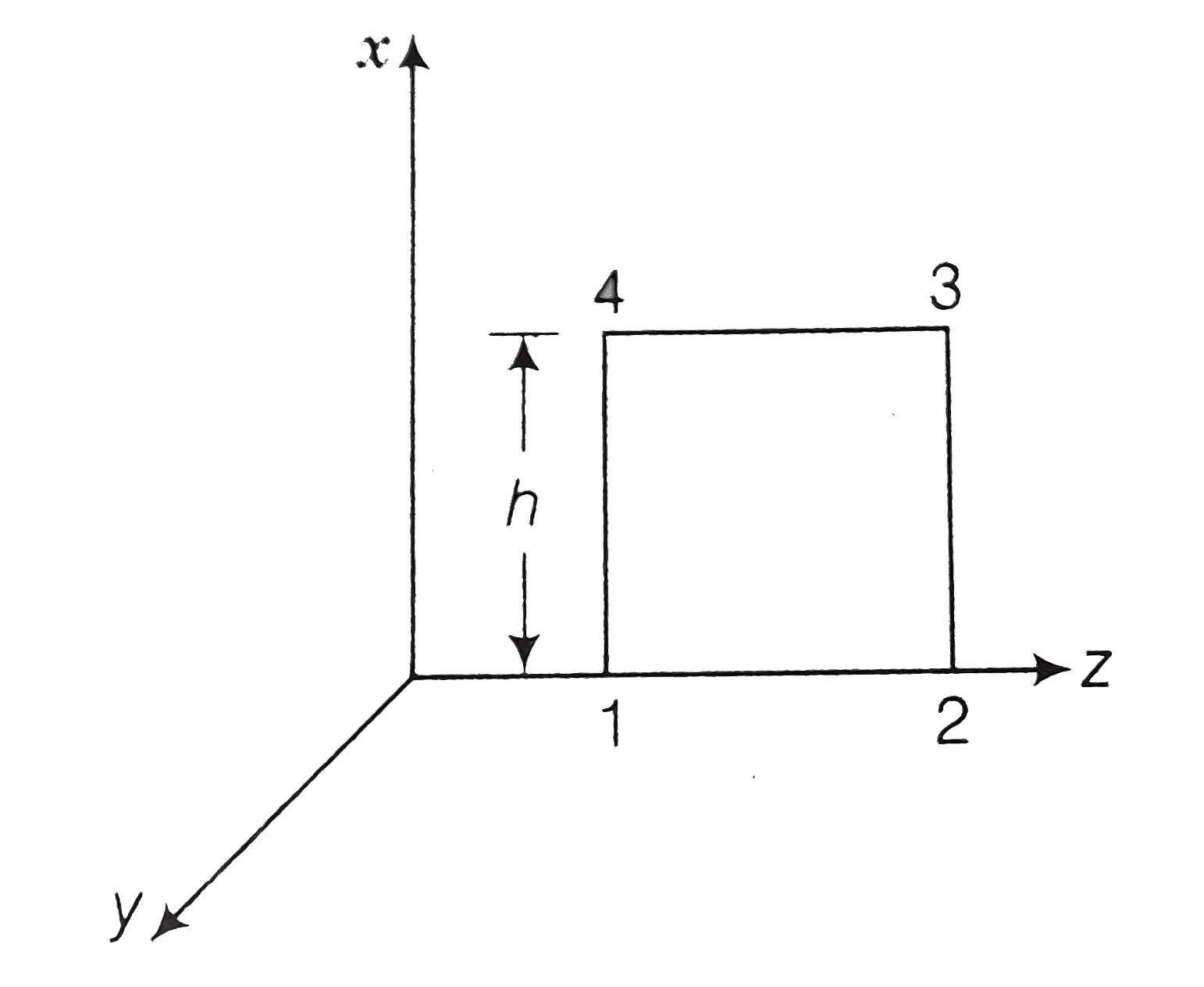Dimensions of ε0dϕEdt are same as that of
charge
potential
capacitance
current
The correct Answer is:D
To find the dimensions of the expression ϵ0dΦEdt, we can break it down into its components and analyze each part step by step.
Step 1: Understanding the components
The expression consists of two parts:
1. ϵ0 (the permittivity of free space)
2. dΦEdt (the rate of change of electric flux)
Step 2: Finding the dimensions of ϵ0
The permittivity of free space ϵ0 has dimensions that can be derived from the relationship between capacitance, charge, and potential difference. The dimension of capacitance C is given by:
C=QV
Where:
- Q is charge with dimensions (Q)=A⋅T
- V is potential difference with dimensions (V)=ML2AT3
Rearranging gives:
C=A⋅TML2AT3=A2T4ML2
From the definition of capacitance, we also know:
C=ϵ0⋅LL=ϵ0
Thus, the dimensions of ϵ0 can be expressed as:
(\epsilon_0) = \frac{M^{-1} L^{-2} A^2 T^4}
Step 3: Finding the dimensions of dΦEdt
The electric flux ΦE is given by:
ΦE=E⋅A
Where:
- E (electric field) has dimensions (E)=MLAT3
- A (area) has dimensions (A)=L2
Thus, the dimensions of electric flux are:
(ΦE)=(E)⋅(A)=MLAT3⋅L2=ML3AT3
Now, finding the dimensions of dΦEdt:
dΦEdt has dimensions ML3AT3⋅1T=ML3AT4
Step 4: Combining the dimensions
Now, we can combine the dimensions of ϵ0 and dΦEdt:
(ϵ0dΦEdt)=(ϵ0)⋅(dΦEdt)=(M−1L−2A2T4)⋅(ML3AT4)
Calculating this gives:
=M−1L−2A2T4⋅ML3AT4=L3−2A2−1=L1A1=LA
Conclusion
The dimensions of ϵ0dΦEdt are the same as that of current I, which has dimensions (I)=A.
Final Answer
Thus, the dimensions of ϵ0dΦEdt are the same as that of current, which is A.
---
The expression consists of two parts:
1. ϵ0 (the permittivity of free space)
2. dΦEdt (the rate of change of electric flux)
The permittivity of free space ϵ0 has dimensions that can be derived from the relationship between capacitance, charge, and potential difference. The dimension of capacitance C is given by:
C=QV
Where:
- Q is charge with dimensions (Q)=A⋅T
- V is potential difference with dimensions (V)=ML2AT3
C=A⋅TML2AT3=A2T4ML2
From the definition of capacitance, we also know:
C=ϵ0⋅LL=ϵ0
Thus, the dimensions of ϵ0 can be expressed as:
(\epsilon_0) = \frac{M^{-1} L^{-2} A^2 T^4}
The electric flux ΦE is given by:
ΦE=E⋅A
Where:
- E (electric field) has dimensions (E)=MLAT3
- A (area) has dimensions (A)=L2
(ΦE)=(E)⋅(A)=MLAT3⋅L2=ML3AT3
dΦEdt has dimensions ML3AT3⋅1T=ML3AT4
Now, we can combine the dimensions of ϵ0 and dΦEdt:
(ϵ0dΦEdt)=(ϵ0)⋅(dΦEdt)=(M−1L−2A2T4)⋅(ML3AT4)
=M−1L−2A2T4⋅ML3AT4=L3−2A2−1=L1A1=LA
The dimensions of ϵ0dΦEdt are the same as that of current I, which has dimensions (I)=A.
Thus, the dimensions of ϵ0dΦEdt are the same as that of current, which is A.
Topper's Solved these Questions
- BOOK - DC PANDEY ENGLISHCHAPTER - ELECTROMAGNETIC WAVESEXERCISE - Check point 8.215videos
ELECTROMAGNETIC WAVES
- BOOK - DC PANDEY ENGLISHCHAPTER - ELECTROMAGNETIC WAVESEXERCISE - Sec A51videos
ELECTROMAGNETIC WAVES
- BOOK - DC PANDEY ENGLISHCHAPTER - ELECTROMAGNETIC WAVESEXERCISE - Examples14videos
ELECTROMAGNETIC WAVES
- BOOK - DC PANDEY ENGLISHCHAPTER - ELECTROMAGNETIC INDUCTIONEXERCISE - Medical entrances gallery25videos
ELECTROMAGNETIC INDUCTION
- BOOK - DC PANDEY ENGLISHCHAPTER - ELECTROSTATIC POTENTIAL AND CAPACITORSEXERCISE - (C) Chapter exercises50videos
ELECTROSTATIC POTENTIAL AND CAPACITORS
Similar Questions
Knowledge Check
- Question 1 - Select One
The dimensions of 1√μ0ε0 are the same as that of
AvelocityBtimeCcapacitanceDdistance - Question 2 - Select One
The dimension of Planck's constant are the same as that of
AchargeBworkCforceDAngular momentum
A plane EM wave travelling in vacuum along z-direction is given by E=E0 sin (kz−ωt)ˆi and B=B0 sin (kz−ωt)ˆj
(i) Evaluate ∫E.dl over the rectangular loop 1234 shown in figure.
(ii) Evaluate ∫B.ds over the surface bounded by loop 1234.
(iii) Use equation ∫E.dl=−dϕBdt to prove E0B0=c.
(iv) By using similar proces and the equation
∫B.dl=μ0I+ε0dϕEdt, prove that c1√μ0ε0
 View Solution
View SolutionIf E denotes of electric field, the dimension of a quantity ∈0dEdt are those of
View SolutionShow that the dimensions of the displacement current (ε0dΦEdt) are that of an electric current.
View SolutionDimensions of ohm are same as that of (where h is Planck's constant and e is charge)
View SolutionThe dimension of Planck's constant are the same as that of
View SolutionForce is given by the expression F = A cos (Bx) + C cos (Dt), where x is displacement and t is time. The dimension of DB is same as that of
View Solution

